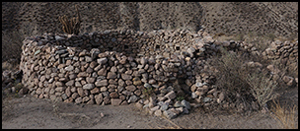Article contents
The making of an imperial agricultural landscape in the Valley of Belén
Published online by Cambridge University Press: 13 November 2019
Abstract

As the Inca Empire was predominantly agrarian, the integration of local farming communities into a corporate agricultural system constituted a great challenge for the imperial political economy. The authors thus analyse an unusual circular structure in the Altos de Arica region of northern Chile, which resembles an important building—called ‘sunturhuasi’—in the capital, Cusco. They explore this structure using three-dimensional modelling, identifying its probable use in astronomical observations and hence its clear connection with the Inca agricultural calendar, ultimately suggesting that it was central to an imperial built environment related to the political economy of maize production.
- Type
- Research
- Information
- Copyright
- Copyright © Antiquity Publications Ltd, 2019
References
- 3
- Cited by


